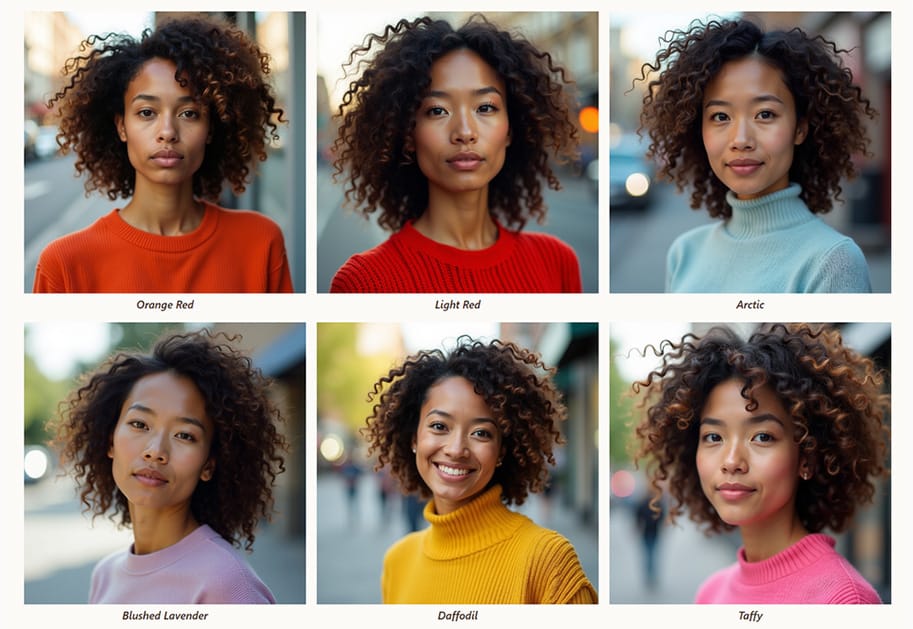Complete Guide to Color Analysis for Beginners

Color analysis is more than just a trend—it’s a transformative way to unlock your best look and feel more confident in your style. But where do you start? This guide walks you through the fundamentals of color analysis, helping you discover your season, your undertone, and the colors that bring out your natural glow.
What is seasonal color analysis?
- Definition: Color analysis is the practice of identifying the colors that harmonize with your natural features (skin, hair, and eyes).
- Origins: It began with seasonal frameworks popularized in the 1980s and has evolved with modern tools and techniques.
- Why it matters: Wearing the right colors enhances your appearance, simplifies your wardrobe, and boosts your confidence.
The benefits of knowing your color season
- Simplified Style: Build a cohesive wardrobe that makes getting dressed effortless.
- Better Shopping: Say goodbye to buying clothes that sit unworn in your closet.
- Confidence Boost: Look and feel your best in every outfit.
How to Determine Your Skin Undertone
Understanding your skin’s undertone is the first and most important step in color analysis. It’s like finding the blueprint for your unique palette—the secret to unlocking the colors that make you shine. Whether you have a warm, cool, or neutral undertone, each type influences how colors interact with your natural features.
Warm, Cool, Neutral
- Warm Undertones: Your skin radiates a golden, peachy, or yellow warmth. Colors like earthy greens, corals, and golden yellows will enhance your natural glow.
- Cool Undertones: A soft pink, bluish, or rosy tint lies beneath your skin. Think icy blues, soft purples, and crisp whites to complement your look.
- Neutral Undertones: A harmonious balance of warm and cool tones. You’re the chameleon who can wear almost anything, from soft beiges to deep jewel tones.
Tests to Try
- The Jewelry Test: Do you light up in gold, or does silver make you sparkle? Gold suits warm undertones, while silver complements cool undertones. If both work equally well, you might be neutral.
- The Vein Test: Look at the veins on your wrist. Are they greenish (warm undertones) or bluish/purple (cool undertones)? Can’t decide? You could be neutral.
- The White Paper Test: Hold a sheet of plain white paper next to your face in natural light. If your skin looks yellowish or golden, you’re warm-toned. If it appears pink, rosy, or bluish, you’re cool-toned. Neutral tones often appear grayish by comparison.
- The Sun Reaction Test: Does your skin tan easily or burn quickly? Tanning points to warm undertones, while burning suggests cool undertones. Neutral undertones often have mixed reactions.
See Skin Undertones Explained: Warm, Cool, and Neutral
The Four Seasons of Color Analysis
Spring, Summer, Autumn, Winter
Imagine your personal palette as a season, reflecting the unique interplay of your skin, hair, and eyes. The seasonal framework divides into four categories, each representing a spectrum of colors designed to enhance your natural beauty.
The 12-Season Analysis
To refine the classic four seasons, color analysis often includes three sub-palettes for each season, creating a 12-season system. This approach considers additional nuances like depth (light vs. deep), brightness (bright vs. muted), and temperature (warm vs. cool).
Key Traits and Sub-Palettes
- Spring: Warm and bright with golden undertones.
- Light Spring: Soft and delicate colors like peach and mint.
- True Spring: Vibrant corals, sunny yellows, and fresh greens.
- Bright Spring: High-energy, bold colors like turquoise and clear pink.
- Summer: Cool and soft with rosy undertones.
- Light Summer: Gentle pastels like powder blue and lavender.
- True Summer: Muted, elegant shades like dusty rose and slate blue.
- Soft Summer: Earthy tones with a cool touch, such as taupe and sage.
- Autumn: Warm and rich with deep golden undertones.
- Soft Autumn: Muted, warm shades like camel and olive.
- True Autumn: Bold earthy tones like rust, mustard, and moss green.
- Deep Autumn: Dark and dramatic hues like chocolate brown and aubergine.
- Winter: Cool and bold with striking contrasts.
- Bright Winter: Clear, icy colors like cobalt and fuchsia.
- True Winter: High-contrast shades like true red and stark white.
- Deep Winter: Dark jewel tones like emerald and navy.
How Seasons Work with Undertones and Features
Each season and sub-palette corresponds to a blend of undertone and personal features like hair and eye color. For example:
- Light Spring: Warm undertone + light features.
- Soft Summer: Cool undertone + soft, muted features.
- Deep Winter: Cool undertone + dark, striking features.
Still curious about your color season? Try our Color Analysis Tool today and discover the colors that will transform your wardrobe and style.
